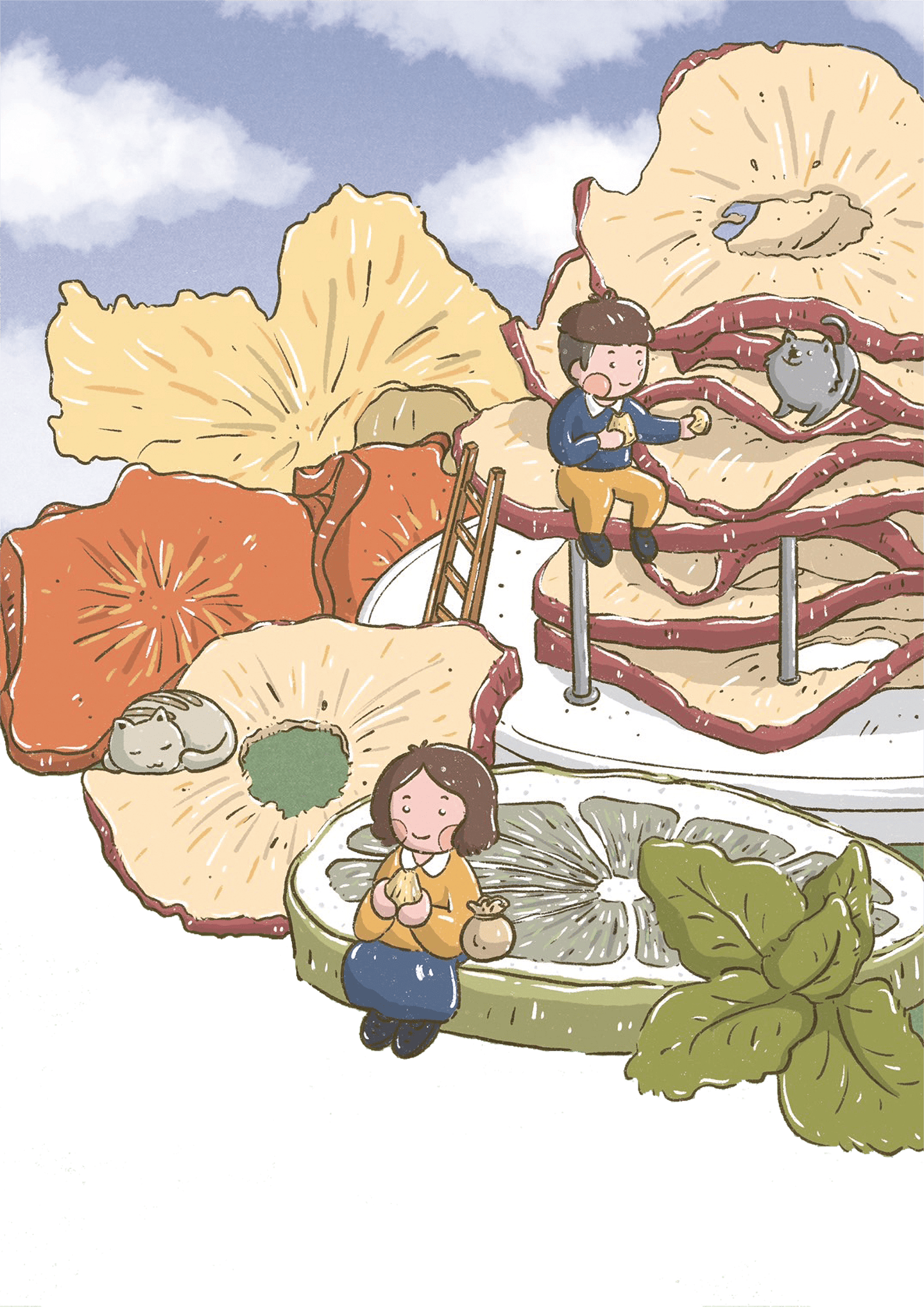By Ng Hooi Lin
Edited and translated by Wu Hsiao-ting and Steven Turner
Graphic by Lin Jia-sheng
Dried fruits contain more dietary fiber, minerals, and phytochemicals than their fresh counterparts of equal weight. However, they are also high in sugar and calories. To avoid overconsumption and enhance their nutritional value, a nutritionist suggested pairing them with nuts, yogurt, oatmeal milk porridge, or other comparable foods.
I brought along some dried figs and nut butter as a gift when I met up with an old friend. As I listened to him share the latest updates on his life, I enjoyed a pastry he had brought. At one point while talking, he popped a dried fig into his mouth, chewed for a few seconds, and then suddenly stopped and looked at me with a puzzled expression. “Isn’t this dried fig too sweet?” he said. “It can’t be healthy, can it?”
I understood his concern. I have observed that many people are uncomfortable with consuming sugar and even prohibit those around them from eating it. However, this is due to a lack of comprehensive understanding about sugar and its effects. I told my friend that although my dried figs and the crispy treat he had brought were both sweet, refined sweet pastries such as his can cause blood sugar to spike. This then requires the pancreas to rapidly release insulin to remove the glucose from the bloodstream, making it difficult to stabilize blood sugar levels.
As with many other dried fruits, the sweetness in my figs isn’t derived from added sugar. Drying fruits removes the majority of their water content, resulting in a higher concentration of their natural sugar content. This is why dried fruits taste sweeter than their fresh counterparts. When choosing dried fruits, it’s important to check the food label to see if they contain saturated fat and added sugar. I would choose non-fried and additive-free dried fruits and avoid those with additional sugar.
That being said, even dried fruits without added sugar can still be high in calories. If they are consumed as snacks, without moderation, they may contribute to weight gain over time. If you are not careful, it is easy to overconsume dried fruits. For example, you may feel satiated after eating eight to ten fresh grapes. However, it is not uncommon to eat 20 to 30 raisins—or more—in one sitting. This is because dried fruits have less water and a smaller volume, and are less likely to produce a feeling of satiety. The result is that you may unconsciously overeat.
To prevent this, try combining dried fruits with other foods, such as nuts, yogurt, or oatmeal milk porridge. Besides preventing overconsumption, this method adds variety in taste and flavor, as well as enhancing the overall nutritional value of our diet.

“So, fresh fruits are the healthy choice!” my friend said, given that one must be careful not to overconsume dried fruits. But consider this: how many people would carry a large, heavy bunch of fresh grapes in their waist bags when going for marathon training? Probably not many. But it’s easy to bring along dried grapes, figs, or apricots as a quick source of glucose and calories when participating in outdoor activities.
In addition, for busy individuals juggling work and family responsibilities, eating the recommended two servings of fruit a day may be hard. Even having regular meals may become a luxury. In such circumstances, dried fruits can serve as a convenient and nutritious option, especially if fresh fruit is not readily available. About 40 grams of dried fruits are equivalent to one serving of fruit.
And there is another advantage to dried fruits too: when fresh fruits and dried fruits are compared by weight, the latter has higher levels of dietary fiber and minerals such as potassium, magnesium, and calcium. This dietary fiber not only provides nutrition but also feeds the microorganisms in your intestines, which may have a positive effect on your colon health. Dried fruits are also higher in phytochemicals, which contribute to their antioxidant properties.
In the end, eating or not eating certain foods does not necessarily guarantee better health. In the field of nutrition, there are no strict “must-eat” or “never-eat” rules for any particular food. Instead, eating a healthy, balanced diet and exercising portion control is the key. Monitor the amount of dried fruits you eat, pair them with protein-rich foods, and observe whether different dried fruits cause bloating or discomfort. Understanding your own needs and finding a dietary approach that works for you and your lifestyle is the direction for which you should strive.



